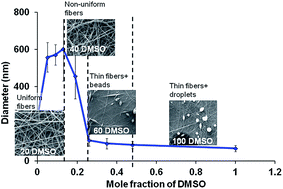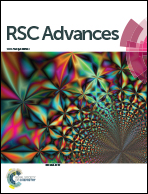The electrospinning behavior of poly(vinyl alcohol) in DMSO–water binary solvent mixtures
Abstract
Poly(vinyl alcohol) (PVA) is readily soluble in both water and DMSO, however, its solubility in a mixture of DMSO–water is highly dependent on the solvent composition. The present study reports on the electrospinning behavior of PVA solutions in DMSO–water binary mixtures at a temperature of 35 °C. Because of the strong interaction of water with DMSO, both the rheology and spinnability of the PVA solutions were influenced by the composition of the binary solvent mixture. At the same concentration of PVA, the morphology of the electrospun fibers changed from highly uniform thick fibers to very fine fibers with a large number of beads or droplets.


 Please wait while we load your content...
Please wait while we load your content...